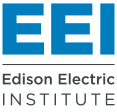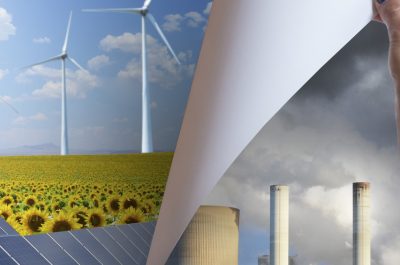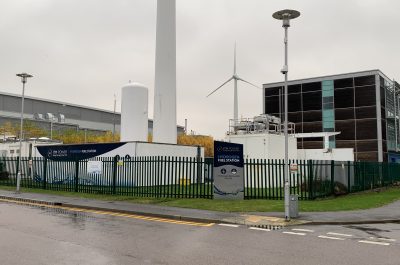Energy Industry in Transition: Many Paths to a Shared Future

An Industry in Transition
There is a dramatic transformation unfolding across the global electric power industry that is generating opportunities and challenges for electric companies throughout the world. This transition is being driven by rapidly changing political, technological and market conditions. At the same time, the world is becoming increasingly connected at all levels. For the electric power industry, this means that issues that used to be national or regional in scope are becoming much more international and interconnected; trends in policy, technology, consumer choice and security can shape markets and policies around the globe, albeit through the prism of local conditions. The transition, while global in scope, is inherently local in character.
All of this makes for an increasingly complex international energy landscape. While this rich complexity poses some puzzles for electric companies, it also offers significant opportunity. The key to moving forward is to foster a robust, wide-ranging dialogue among electric companies from around the world about this complexity. Organizations like the Edison Electric Institute (EEI) and the Energy Networks Association (ENA) have a key role to play in facilitating these conversations.
A primary goal of EEI’s International Programs division, which I lead, is to act as a conduit for this sort of international dialogue, and as a forum for sharing best practices and lessons learned around important and increasingly international issues such as: cybersecurity; building a smarter, stronger energy grid; delivering customer-centric solutions; and integrating clean energy. The different phases of transition facing each region, nation, company and community presents an immense learning opportunity for companies willing to share, listen to, and internalize these lessons.
The Drivers, Challenges and Opportunities of Transition
Each of the three drivers mentioned above – politics, technology and markets – comes with its own unique set of challenges and opportunities. Together, these drivers also suggest three key questions that electric companies the world over will need to address as the transition progresses.
The term “politics” as used here incorporates the related processes of traditional politics, policymaking and regulation. The main challenge associated with politics is therefore a compound one concerning the interaction of these three processes and their outputs. Institutions such as regulatory bodies can be slow to change, especially when heavily siloed and thus insulated from outside input. In an ideal situation, political, policy and regulatory, processes would all inform each other at each step, improving outcomes.
Outdated regulations short-circuit this process, however. In the context of the energy transition, this inability to assimilate change can be critical. Conversely, the changes wrought by the energy transition can also present an opportunity to start from a clean slate from the political, policy and regulatory standpoints. Under this sort of scenario, institutions are free to experiment and integrate the lessons from the changing energy landscape more readily, improving outcomes. For example, regulatory pilot programs that test new regulatory models on a small scale might serve as a useful and innovative policy tool.
Technological and market forces present similar challenges and opportunities to those outlined for politics. In the case of technology, the challenges surround the ability of legacy systems and their operators to integrate new generation sources, behind-the-meter technologies and to leverage the power of component miniaturization, big data and other transformative trends. Further, the overall pace of growth is accelerating, which itself presents a challenge. The inherent opportunity of course, is the ability to capture and deliver ever greater value by capturing the dividends of innovation by remaining agile and flexible.
Similarly, inefficient processes for firms entering the market, and for clearing failures, make markets unresponsive to rapid changes in customer demand, and limit the ability of innovative actors to enter them. At the same time, the impetus of the transition can present an opportunity to develop new tools and mechanisms that maximize value and flexibility, while minimizing inefficiencies and lost value due to poorly-managed complexity. Going forward, electric companies will have to be in constant and deep communication with the changing contours of the marketplace, including a keen sensitivity to demographic trends such as rapid population growth and urbanization.
Questions for the Future
The challenges and opportunities facing electric companies around the world as they grapple with the drivers of change will of course vary in their specifics from place to place, but the broad strokes are universal. While the impetus for engaging the transition will depend on the local state of the three drivers, one thing that will remain constant is the fundamental importance of the energy grid to the economy and the broader social well-being. Every participant in the economy is effectively a stakeholder in this transition, because reliable and accessible energy is a fundamental prerequisite to bridging the many divides that separate people; from healthcare, to digital access, and access to clean water. The energy transition has, and will continue to have, major implications for employment, investment, and economic growth and diversification.
As the transition evolves across the globe, there are three general questions that electric companies will have to grapple with:
- What is the role of electric companies in the energy transition?
- How can electric companies prepare for the transition?
- What will effective and inclusive regulation look like 20 or 30 years down the road, and how do electric companies most effectively engage policymakers regarding this regulation?
Answering these questions with confidence will require a robust, wide-ranging dialogue among electric companies and other stakeholders from around the world about the different issues they are facing, and what they have learned. Being able to learn from the experiences of electric companies in other countries, whether in the U.S. or Australia, will be critically important. Consider Germany’s experience with its “energiewende” clean energy transformation program. What can other nations learn from the German experience? What are the factors that are constant between Germany and Australia, or the U.S.? What are the differences? What are the implications for energy policy?
The key collective task going forward is to construct a framework that encourages international electric companies to compare notes and share experiences in order to be able to develop this sort of comparative learning process. The more stakeholders that are involved in the dialogue, the more prepared we will be to start answering these questions as we usher in our shared energy future.
This is a modified version of the Keynote Address by Dr Lawrence E. Jones, Vice President International Programs, Edison Electric Institute at the Energy Networks 2016 Conference and Exhibition in Adelaide.


